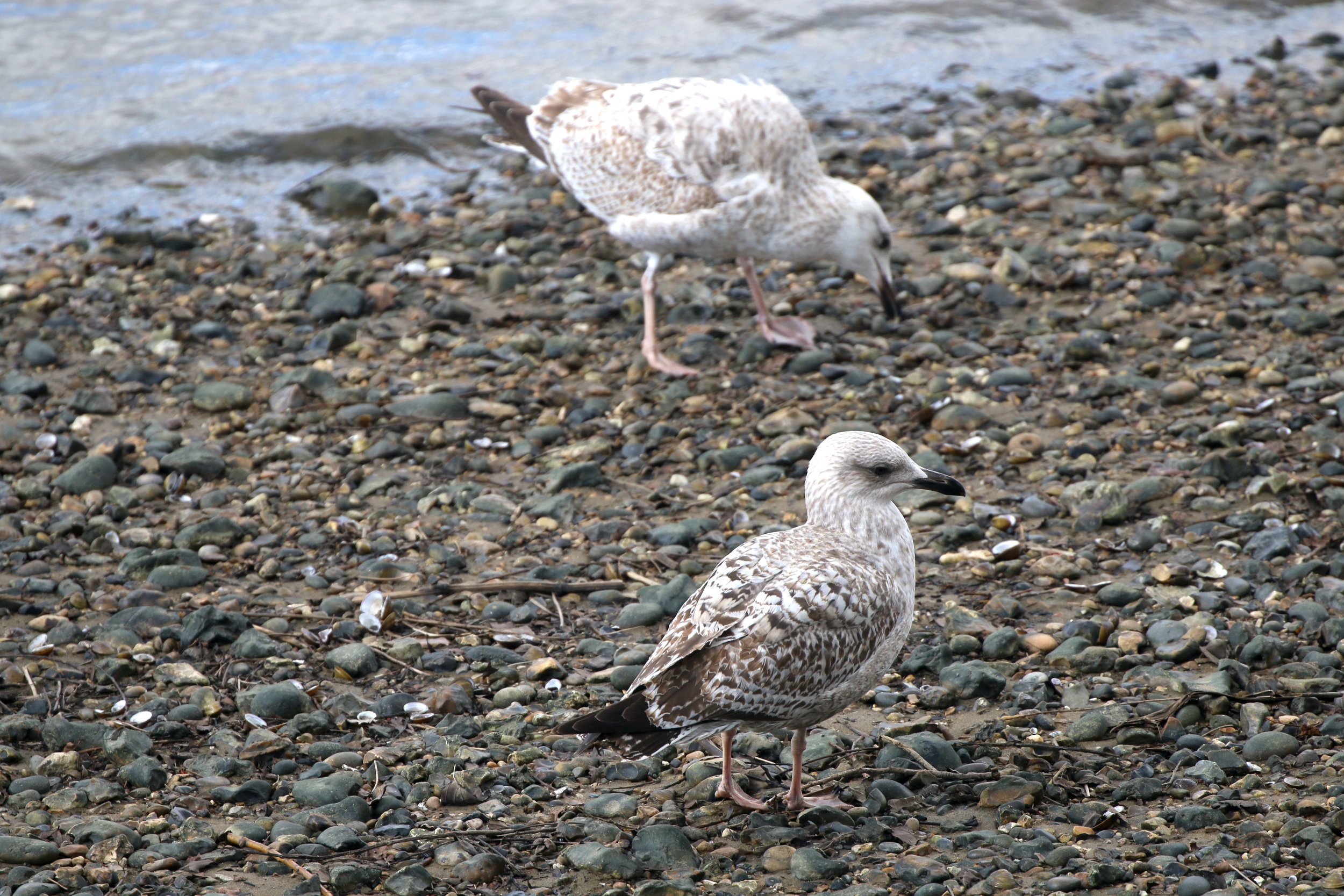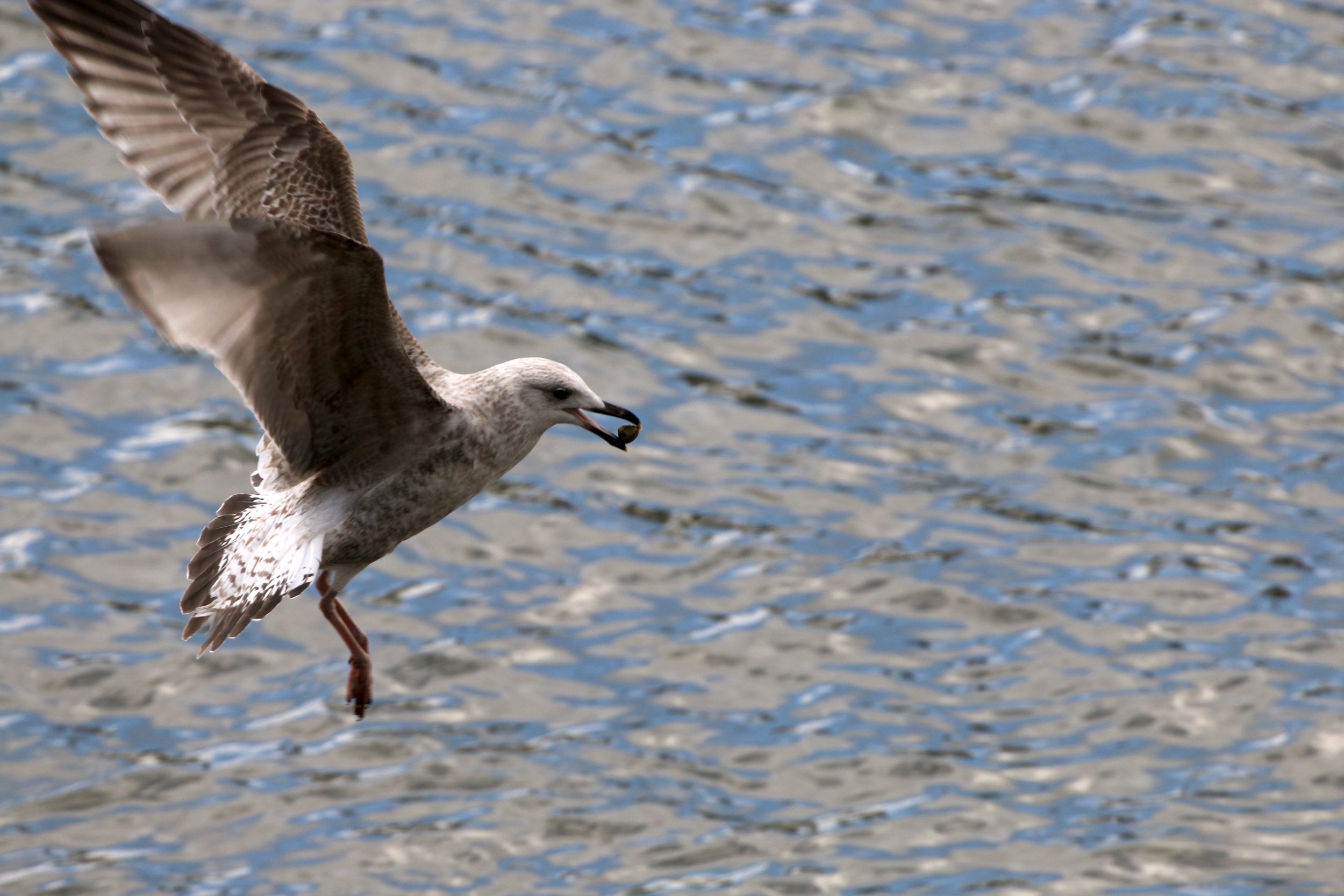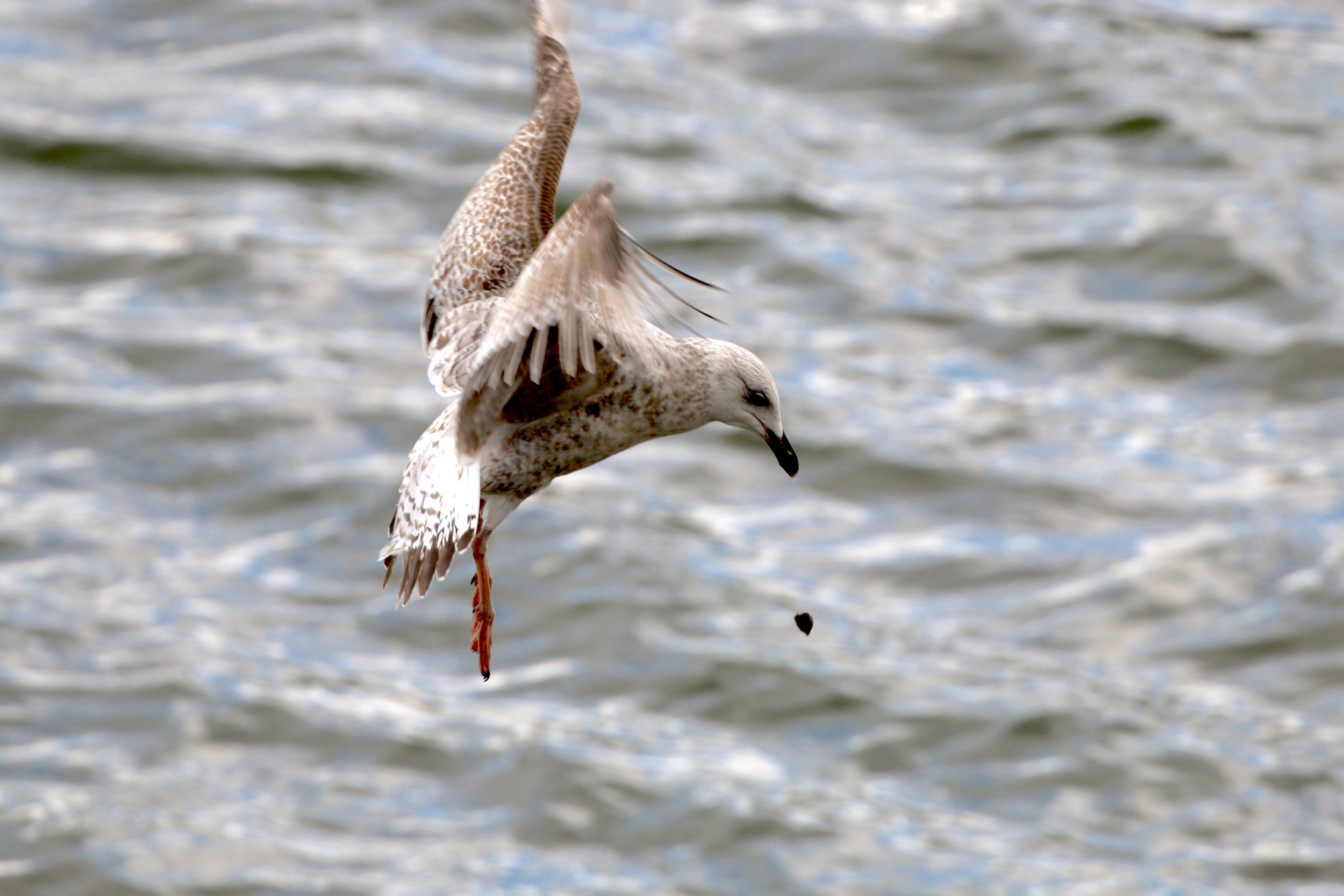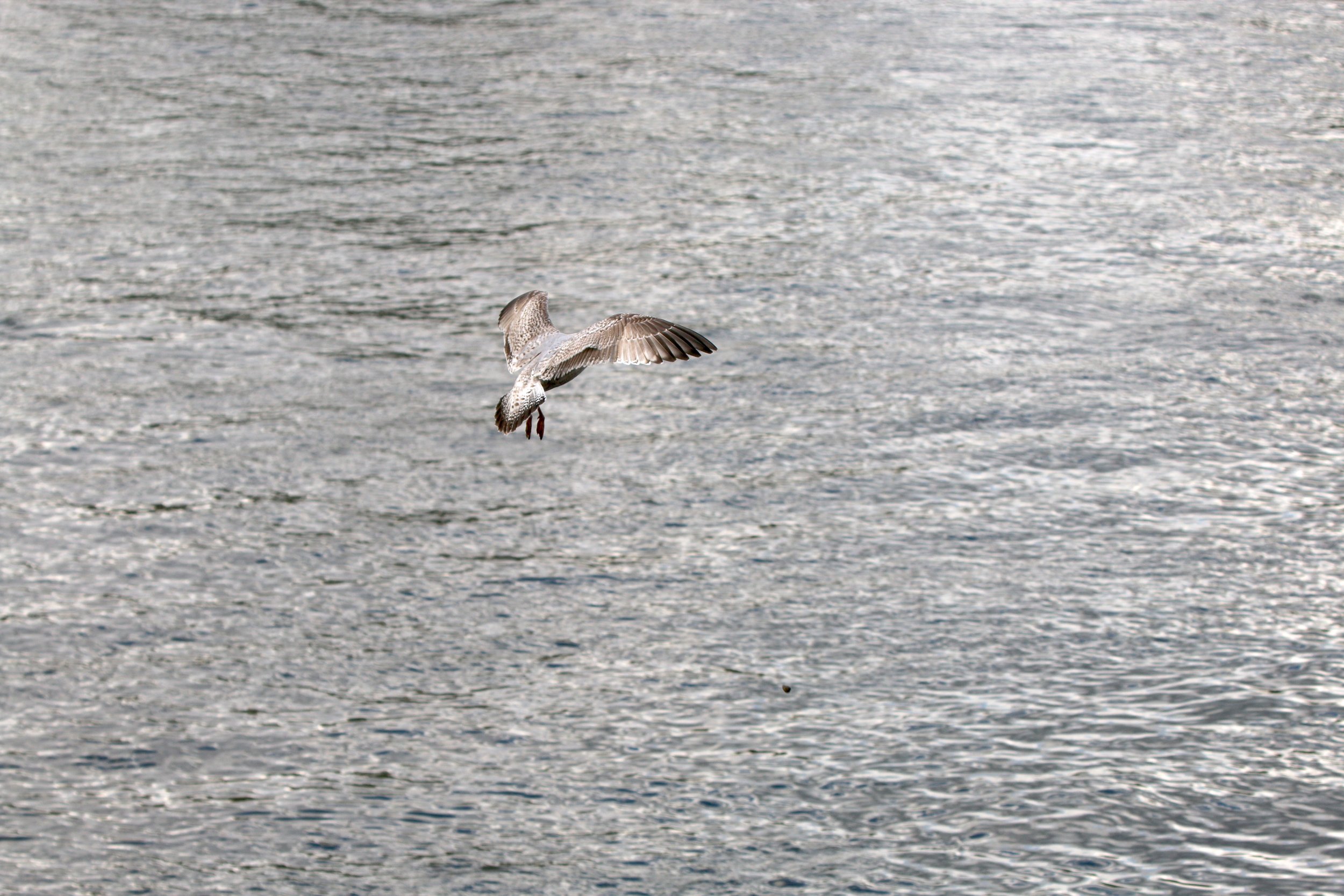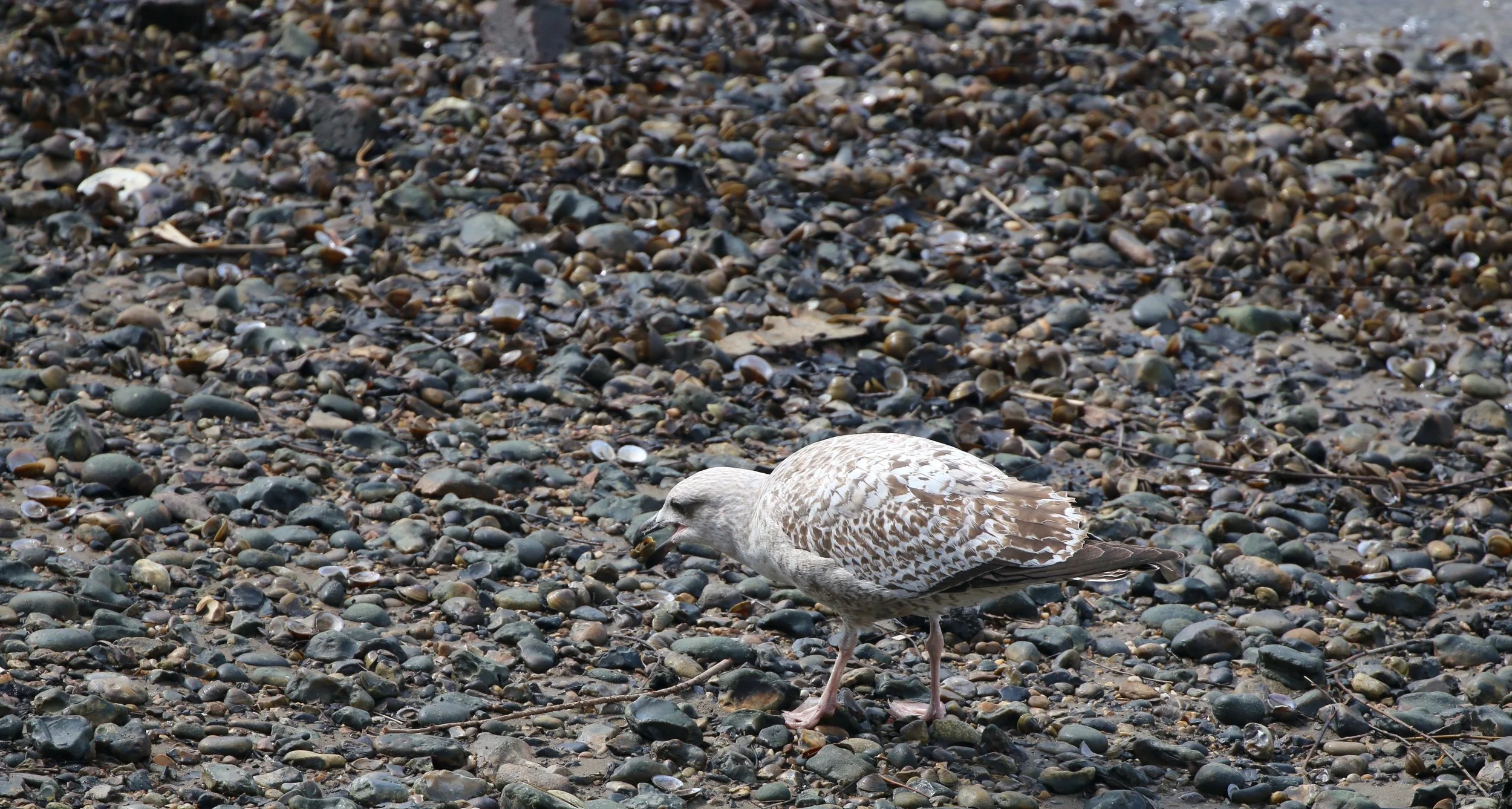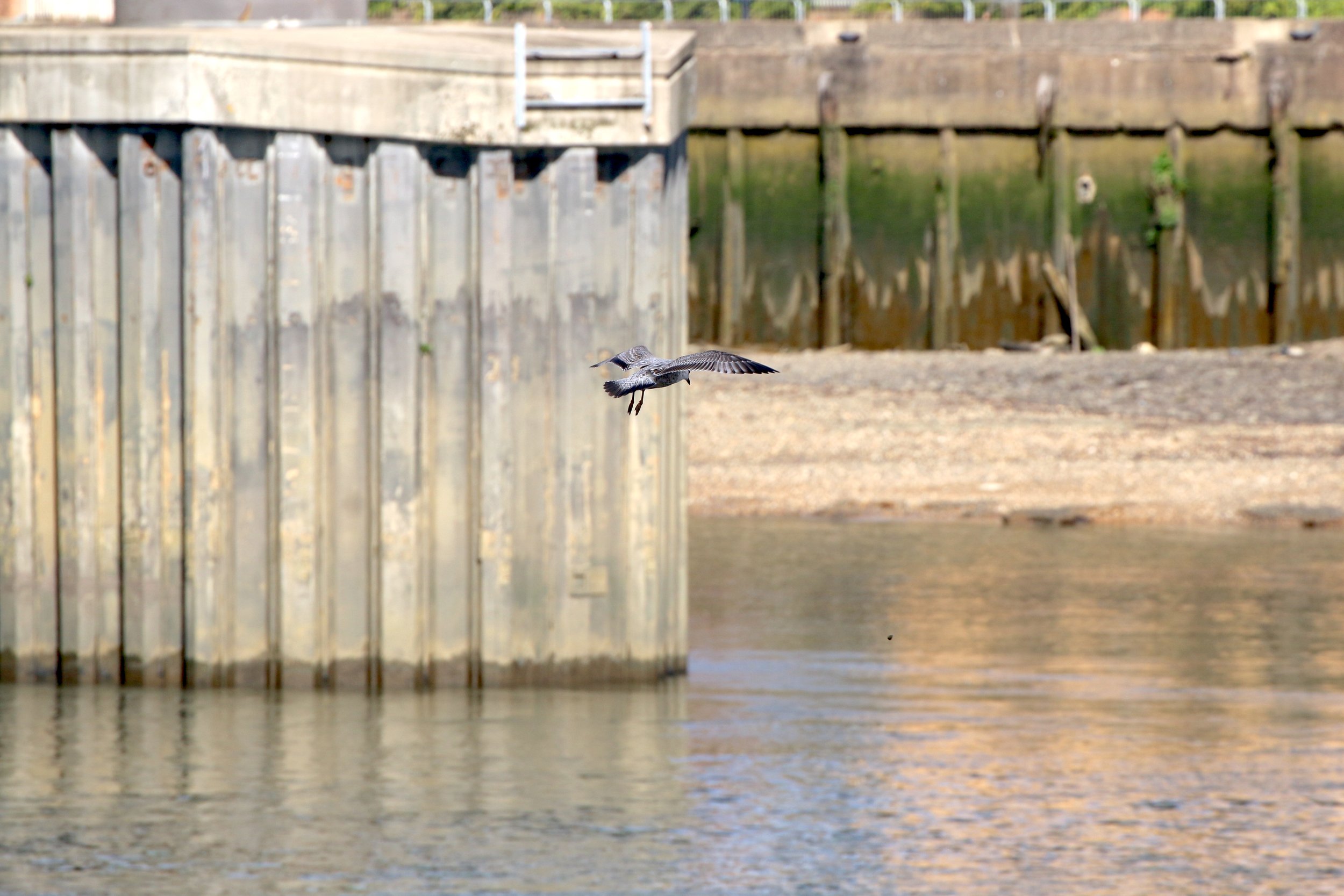2022 | Thames River, UK
Yellow-legged gull (Larus michahellis) clam dropping
Today’s post is proof that there’s interesting animal behaviour everywhere, including in my local urban neighbourhood of southwest London. Just take some common birds and add water.
The behaviour is one that’s not quite proper tool use - it’s been called ‘proto’ tool use by researchers - because the birds in question don’t directly hold and use an object. But they do still show fine control and judgement. And we’re using photos that are hot off the press: I took them just this weekend beside the Thames river in Putney.
Welcome to gull shell dropping.
Immigrant IDs
Many birds are known to drop food onto hard surfaces to help crack a tough shell. Sometimes the shell encloses a seed or nut, like the candlenuts dropped by New Caledonian crows (Corvus moneduloides), and sometimes animal prey is involved, such as the bones and tortoises dropped by bearded vultures (Gypaetus barbarous). The Thames gulls I was watching belong to the genus Larus, as do many other gull species. I’m not in any way a bird expert, but based on my reading I believe these are yellow-legged gulls (Larus michahellis), a species with quite a large range centred around the Mediterranean Sea. (If you do happen to be an expert and my photos suggest I’ve got this wrong, I’m very happy to hear from you @twig_technology on twitter!)
The other key participants in our story today are the shellfish prey that the gulls are targeting. It’s a much easier task to ID these small brownish bivalves, because they’ve been spreading rapidly along the Thames since first arriving in the river in 2004. This is the Asiatic or Asian clam (Corbicula fluminea), one of the most successful freshwater invasive species around the world. Each one of these hermaphroditic clams can produce over 68,000 offspring per year, and they grow remarkably quickly. Good news for hungry gulls, not so much for native, outcompeted shellfish species.
Here’s the gull/clam combination we’ll be working with. The shells are ones I picked up from the river too, with a scale in cm:
Four steps to success
The rest of this post is an illustrated narrative on how these gulls go about getting at their squishy clam meal. There are four main steps: (1) find the clam, (2) fly to the right position, (3) drop—and keep track of—the clam, and (4) assess the damage. Repeat if necessary. I’ll be using several different instances of dropping behaviour, including multiple birds from the one group, to demonstrate the sequence.
The search for clams takes place in the newly exposed pebbly muds of the Thames riverbank, as the tide goes out. The birds need to wander and poke between the many, many broken clams already there, in order to find those that are still alive and unopened. The gulls also walk into the still-submerged sediments in their search:
In some cases this is the point at which they’ll take flight, clam tightly clutched in their beak. But there’s also the option of simply dropping the shell repeatedly on the ground, from a standing start. It’s easy to imagine a transition from a simple stand-and-drop technique to slightly higher and higher drop-off points as the evolutionary prompt for this behaviour, but it’s not clear to what extent learning may also be involved.
A 1982 study of herring gulls (Larus argentatus) dropping shellfish in Massachusetts showed that those gulls got more accurate and efficient with age, and in fact the birds showed several traits that had previously been assigned to tool-using chimpanzees (Pan troglodytes): purpose, concentration, mental mapping and selectivity. Since I was not conducting a systematic study, I can’t add to those debates at this point. If you have time, a notebook, some binoculars and patience, there’s a study just waiting for you.
Here’s an example of a gull simply dropping the clam, which it then picked up and dropped over and again, without flying off:
Fun. But that’s not really the behaviour we’re here for. Let’s head to the air.
Clam safely in their beak, the gulls typically took off and flew a short distance low and horizontally. They would then either cycle out over the water, gaining height, or they would enter a steep climb as they flew parallel to the shoreline.
After a few seconds, they would reach a height of around 3 to 4 metres—I’m estimating here since I didn’t have a way to make precise measurements—and stabilise their position with their body held more vertically than is seen in level flight. This kept them more or less in the same spot—essentially they would tilt up into a less precise version of a hummingbird’s hover. These two photos are from the same shell-drop event, showing this steadying behaviour:
It was not always clear to me, but there were also a few occasions where the gull appeared at this point to check the landing zone for the shell, by tilting its head to point an eye downards. I can’t be sure this wasn’t just a coincidence though. Here’s an example:
And with that, the clam is let go. You may have noticed that all the photos show the birds facing to the right, which was northwest or upstream from where I stood on the Thames north bank. That was the general direction of incoming winds, which supports previous observations that gulls may align themselves into the wind for greater control (again, I didn’t have instruments to make a more definitive assessment).
When released, the clam didn't appear to be thrown with any added force. Instead, it was simply dropped from the beak. The gulls would then observe the course of the falling shellfish very keenly, and once they’d tracked its path they quickly dropped down after it. This collection of images shows different birds demonstrating the release, initial drop, and close observation of the falling meal (the first bird is the same one as in the photo at the top of this post):
(The third image above does have the falling shell in it, below and to the right of the gull, although it’s not easy to see against the river.)
When the diving bird landed at the dropped shell, there was a chance that it would be challenged for the food by another gull, or even a nearby corvid. But most often the gull reached the prey unmolested and began testing the shell strength by pecking at it and picking it up. If the shell was insufficiently weakened then the gull would take off again almost immediately, repeating the drop sequence. I can’t say whether they always targeted particular parts of the river bank as their strike zone, but I plan to find out in future visits.
Once the shell was damaged, or weakened to the point that the gull could prise apart the two valves, the bird began picking at the meat inside. The gulls I saw didn’t appear to try and hold the shell with their foot or wedge it in any other way, with their beak seemingly dextrous enough to get the clam meat out. Eating the clam typically took less than 20 seconds, and then the gull would be off looking for its next victim - none of the birds ate only one clam in a foraging bout. This led to a pattern across the flock of some gulls resting or otherwise engaged, while specific individuals foraged repeatedly around them.
Here they are with their hard-earned snacks—you may need to zoom in to differentiate the meal against the busy pebble background. Note also the large number of already-opened clams in the top right of the first image:
And that’s the story that plays out every day along the Thames shoreline at low tide. If you live in a part of the world where gulls and tidal shellfish overlap, I recommend spending some time as the waters recede to see whether your local gulls are equally as resourceful. Or perhaps you’ve got vultures or crows in your local park that are up to some surprising behaviour. It’s well worth spending some quiet time watching them to find out.
Oh, and don’t do what I did, which is accidentally time my gull-watching to coincide with preparations for the Oxford-Cambridge rowing race (known as The Boat Race) that takes place annually on the Thames in west London. It turns out the birds are not happy foragers when the BBC’s huge TV camera drones are hovering nearby.
Further viewing
If you’re wondering how the Zoological Society of London track shellfish abundance in the Thames, here’s a fairly muddy look at their annual survey in action (including several Asiatic clams):
Sources: Gibbons, C. et al. (2010) Identification of Caspian Gull. Part 1: typical birds. British Birds 103: 142–183. || Zoological Society of London (2018) ZSL’s Freshwater Mussel Survey in the Upper Tidal Thames. || Sousa, R. et al. (2008) Ecology of the invasive Asian clam Corbicula fluminea (Müller, 1774) in aquatic ecosystems: an overview. International Journal of Limnology 44: 85-94. || Beck, B. (1982) Chimpocentrism: bias in cognitive ethology. Journal of Human Evolution 11: 3-17.
All image credits: Michael Haslam, Twig Technology || Video credit: Zoological Society of London

